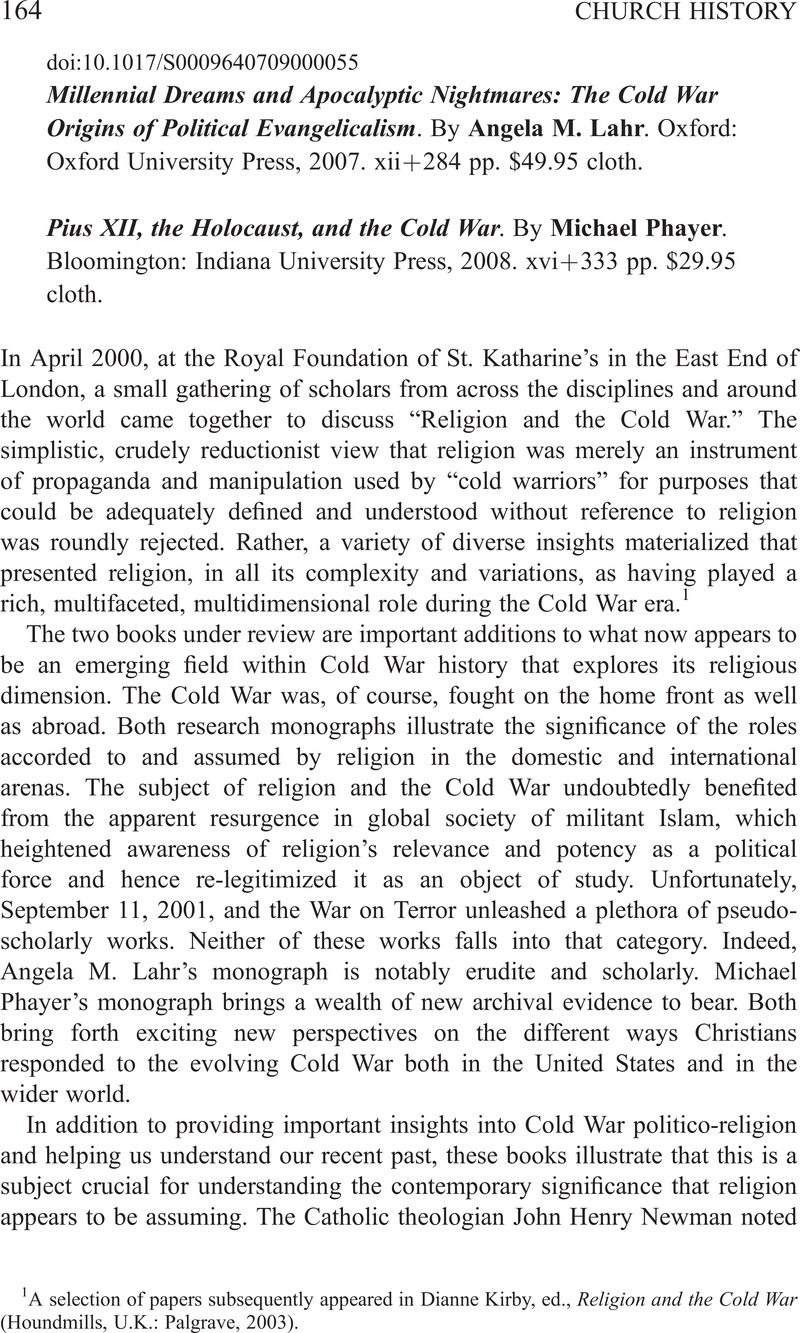No CrossRef data available.
Article contents
Published online by Cambridge University Press: 20 February 2009
Abstract

- Type
- Book Review Essays
- Information
- Copyright
- Copyright © American Society of Church History 2009
References
1 A selection of papers subsequently appeared in Kirby, Dianne, ed., Religion and the Cold War (Houndmills, U.K.: Palgrave, 2003)CrossRefGoogle Scholar.
2 Newman, John Henry, An Essay on the Development of Christian Doctrine (London: Penguin, 1974), 131–150Google Scholar.
3 Conway, John, “Editorial,” Association of Contemporary Church Historians’ Newsletter, September 2000, 2Google ScholarPubMed.
4 Lawson, Tom, The Church of England and the Holocaust: Christianity, Memory and Nazism (Woodbridge, U.K.: Boydell & Brewer, 2006), 2Google Scholar. A notable example is Goldhagen's, DanielA Moral Reckoning: The Role of the Catholic Church during the Holocaust and its Unfulfilled Duty of Repair (New York: Alfred A. Knopf, 2002)Google Scholar.
5 Gushee, David P., “Learning from Christian Rescuers: Lessons for the Churches,” Annals of the American Academy of Political and Social Science vol. 548 (November 1996): 153CrossRefGoogle Scholar; Gerlach, Wolfgang, And the Witnesses Were Silent: The Confessing Church and the Persecution of the Jews, trans. and ed. Barnett, Victoria (Lincoln: University of Nebraska Press, 2000)Google Scholar.
6 Barnett, Victoria, Bystanders: Conscience and Complicity during the Holocaust (Westport, Conn.: Greenwood, 1999), 10Google Scholar.
7 Lawson, The Church of England and the Holocaust.
8 Public Record Office, Kew, Ministry of Information files, INF 1 251.
9 Ibid., INF 1 264 & 292.
10 Quoted in Kirby, , Church, State and Propaganda: The Archbishop of York and International Relations; a Political Study of Cyril Forster Garbett, 1942–1955 (Hull, U.K.: University of Hull Press, 1999), 64Google Scholar.


